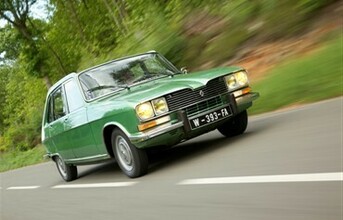
The Renault 16 surprised visitors with its offbeat styling ever since it was unveiled in 1965 at the Geneva Motor Show
In 1965, the Renault 16 stood out as the first status saloon to feature a tailgate, providing it with an unprecedented level of versatility for its day.
The model's original lines lost no time winning over French families of the baby boom years looking for a prestige motor car.
1965: The Renault 16, the original family ‘Voiture à Vivre'
The history of Renault's family cars started 50 years ago in France during the post-war boom. In early 1965, the brand unveiled an innovative new vehicle at the Geneva Motor Show: the Renault 16.
This new hatchback featured an original body shape founded on a two-box design complete with a tailgate for access to the boot. The model combined functional qualities with elegant looks and no fewer than six windows, carrying over the ingredients that were behind the success of the Renault 4 to an upmarket family vehicle. It was the perfect family car.
Renault's determination to innovate
The project to design a successor to the Frégate was an ambitious one, especially as Pierre Dreyfus - Renault's CEO from 1955 to 1975 - wanted it to stand out from its rivals. "We have to take a different approach," he proclaimed. "Cars can't just be four seats and a boot any longer. They must be viewed as a volume."
The result was the Renault 16, a radical car penned by Gaston Juchet and signed off by Dreyfus who predicted it would be "a car for families drawn by modern consumer society."
Crossover thinking
The Renault 16 was a cross between a saloon and a van, a design that made it exceptionally versatile for the era. The boot could be arranged in four different ways, with a carrying capacity ranging from 346dm3 to 1,200dm3 thanks to a sliding, folding and removable rear bench.
Continued to next page


























